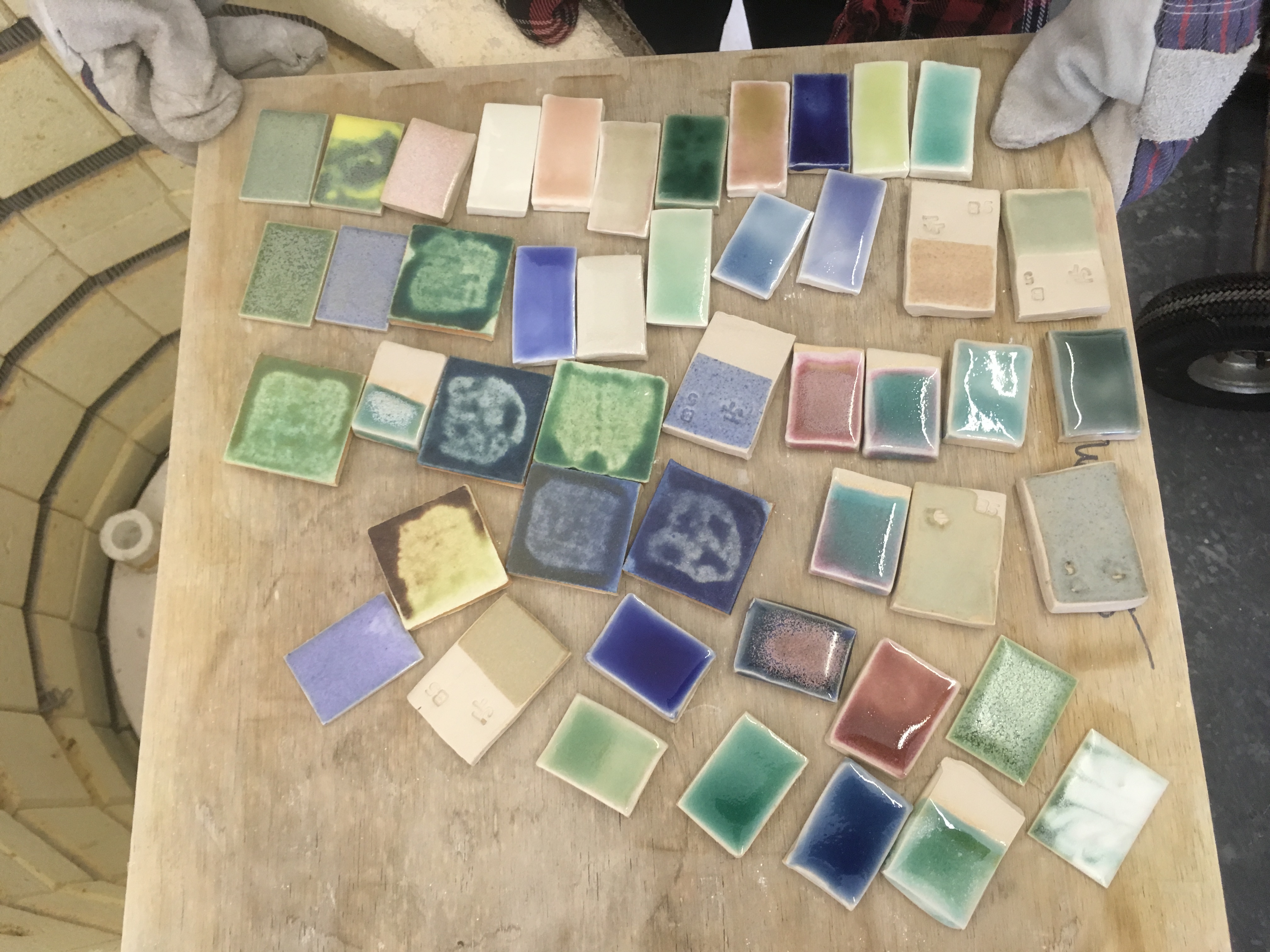
I will be teaching a number of ceramic glaze workshops during 2024

I will be travelling to various studios around the UK and Europe to teach ceramic glaze workshops which expand on my books, Colour in Glazes and Special Effect Glazes. The two-day workshops are suitable for intermediate potters who would like to learn more about glaze chemistry, what each glaze material contributes to the glaze and how to adjust glazes to correct any defects or make special effects such as craters, crystals or crackle. Contact the studios directly to book a place. These courses are popular; if you find the workshop you want to attend is full, I sometimes come back to the same studio in following years so don’t give up!
These workshops cover the fundamentals of what makes up a ceramic glaze and the role played by each ingredient. Participants on the workshop will create and test their own glaze (often based on an existing recipe) during the workshop, fire the glazes overnight, and receive feedback on their results. They will leave with a better understanding of how a glaze is developed and tested and with the knowledge to enable them to create and refine glazes on their own.
27-28 January The Clay Garden, Hammersmith
24-25 February The Clay Garden, Hammersmith
9-10 March La Mine Céramique Paris
23-24 March RAMP Workshop, Silverton, Devon
5-7, 12-14 April El Taller de Ceramica, Malaga
20-21 April Jilly Russell Vessel studio, Special Effect Glazes, Moretonhampstead, Devon
4-5 May Coombe Farm studios, Special Effect Glazes, Dartmouth, Devon
10-11 August London Potters at Cernamic Studios
14-15 September Mud Gang studio, London
21-22 September Muddy Fingers Pottery, Special Effect Glazes, Jarrow
26-27 October Nottingham Ceramics School
I recognise that not everyone will be able to attend one of these courses. There is a lot to be gained from being in a practical workshop with others, but if you cannot attend one of my workshops and would still like to learn about glazes, I have some short online courses available (https://lindabloomfield.co.uk/membership-account/membership-levels/) which cover some of the same content.























